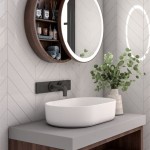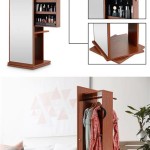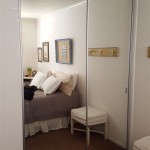How To Remove a Sun Visor Mirror
Sun visor mirrors, while convenient for quick appearance checks, can become damaged, outdated, or simply unwanted. Removing them might seem daunting, but with the right approach and tools, it's a relatively straightforward process. This article outlines several methods for removing sun visor mirrors, catering to different vehicle makes and models.
Before beginning any removal process, one should gather the necessary tools. These may include a flathead screwdriver, a trim removal tool, a small pry bar, and potentially a Phillips head screwdriver. Having these readily available streamlines the process and prevents unnecessary interruptions.
The first step involves identifying the type of mirror attachment. Some mirrors are held in place by simple clips, while others are screwed in or integrated into the visor assembly. Careful examination of the mirror’s edges and surrounding area will reveal the attachment method. This identification is crucial for selecting the appropriate removal technique.
For mirrors secured by clips, a trim removal tool or a flathead screwdriver wrapped in cloth (to prevent scratching) can be utilized. Gently insert the tool between the visor and the mirror housing, applying gentle pressure to release the clips. It is important to work around the mirror's perimeter, releasing each clip systematically. Avoid excessive force, which can damage the visor or the mirror itself.
In some cases, the mirror cover might be a separate piece that needs removal before accessing the clips. This cover can often be gently pried off with a trim removal tool. Look for small seams or gaps around the mirror cover to identify potential pry points. Again, caution is advised to prevent damage.
If the mirror is screwed into the visor, a Phillips head screwdriver will be required. Locate the screws, typically hidden beneath a small cover or plug. Once identified, carefully remove the cover using a trim removal tool or a small flathead screwdriver. Then, unscrew the screws holding the mirror in place. Keep the screws in a safe place for potential reinstallation or future use.
Some vehicles feature mirrors integrated into the visor assembly, making removal more complex. In these instances, consulting the vehicle's service manual is recommended. The manual will provide specific instructions and diagrams tailored to the vehicle model, minimizing the risk of damage. This approach also offers insight into any specialized tools that might be necessary.
After removing the mirror, one should address any remaining clips or attachments. These might need to be detached from the visor or the mirror housing for complete removal. Inspect the visor carefully to ensure no components are left behind.
If the intent is to replace the mirror, the installation process generally reverses the removal steps. Ensure the new mirror is compatible with the vehicle model. Align the mirror correctly within the visor assembly and secure it using the appropriate clips or screws. If the original screws are being reused, ensure they are tightened appropriately but not over-tightened, which could damage the visor.
For visors with integrated mirrors requiring replacement, it's often simpler to replace the entire visor assembly. This approach minimizes the risk of damaging internal components and ensures proper fit and functionality. Again, referencing the vehicle’s service manual will provide model-specific guidance for visor assembly replacement.
When working with any vehicle component, exercising caution and patience is paramount. Avoid using excessive force, which can lead to damage. If uncertainty arises at any point during the process, consulting a professional mechanic is always a prudent choice. They possess the expertise and tools to handle complex removals and installations, ensuring the job is done correctly and safely.
Different vehicle manufacturers employ varying designs and attachment methods for sun visor mirrors. Therefore, these general guidelines may not encompass all scenarios. Referring to the vehicle's owner’s manual or seeking assistance from a professional mechanic is recommended for specific instructions related to a particular make and model.
Proper handling of the visor during the removal process is crucial to prevent damage. Avoid bending or twisting the visor excessively, as this can compromise its structural integrity or damage internal wiring for features like illuminated vanity mirrors. Supporting the visor while working on it can help prevent accidental flexing or damage.
If the removal process involves electrical components, such as wiring for illuminated mirrors, it's essential to disconnect the vehicle's battery before proceeding. This precaution prevents accidental short circuits and ensures personal safety. After completing the removal or installation, reconnect the battery and test the functionality of any related electrical components.
Finally, disposing of the old mirror responsibly is important. If the mirror is intact and functional, consider donating it or offering it for reuse. If not, dispose of it according to local regulations for electronic waste or glass recycling, contributing to environmentally responsible practices.

How To Replace A Broken Car Sun Visor Mirror

How To Replace A Broken Car Sun Visor Mirror

How To Remove And Replace A Vehicle S Sun Visor Yourmechanic Advice

Gmc Yon Sierra Sun Visor Replacement How To Remove Replace Change Vanity Light Diy

Repair Mitsubishi Outlander Sun Visor Mirror

How To Replace A Broken Car Sun Visor Mirror

How To Remove And Replace A Vehicle S Sun Visor Yourmechanic Advice
How To Fix Sun Visor Mirror Cover Toyota Nation Forum

How To Replace Install Mercedes Be R129 A124 Sun Visor Vanity Mirrors
Visor Mirror Replacement Bmw M3 And M4 Forum








